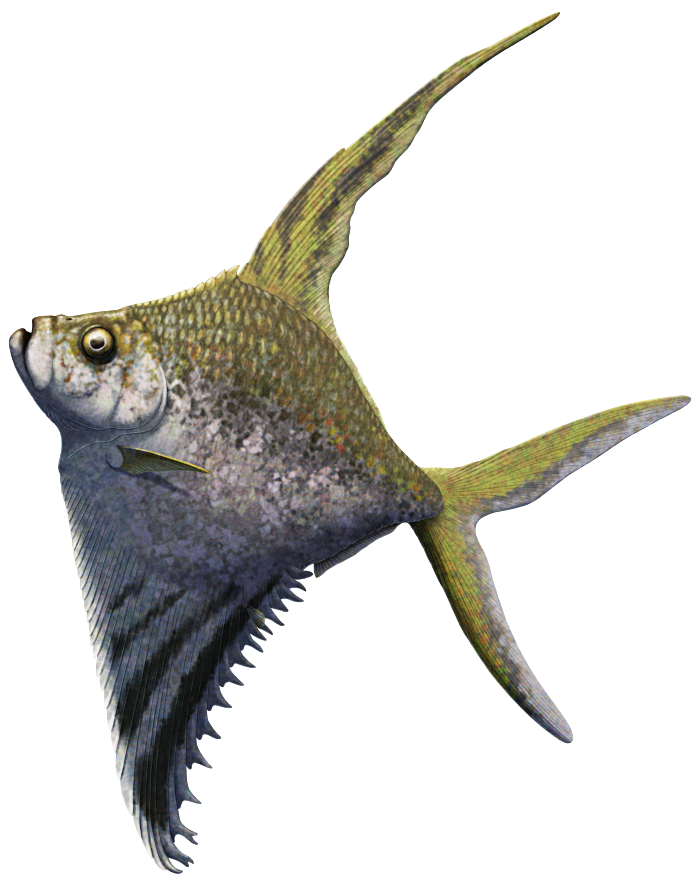Ellimmichthyiformes were a group of ray-finned fish known from the early Cretaceous to the mid-Oligocene, about 140-30 million years ago. For much of that time they were quite widespread, found in various marine, estuarine, and freshwater environments across Africa, Eurasia, and the Americas.
Closely related to modern clupeiformes (herrings, sardines, and anchovies), and characterized by two rows of bony scutes – one in front of the dorsal fin and the other along the belly – they’re also known by the nickname “double‐armored herrings”.
Rhombichthys intoccabilis was a rather unusual-looking ellimmichthyiform from the mid-Cretaceous, around 95 million years ago. Living in shallow reef and lagoon waters covering what is now the West Bank in the Middle East, it was about 20cm long (~8″) and had a tall narrow dorsal fin along with incredibly elongated belly scutes that gave its body a rhombus-like profile.
Juveniles of this species seem to have lacked the extended belly scutes, instead having a much more rounded body shape. This may indicate that adults and juveniles occupied very different ecological roles, or that the distinctive scutes might have been a secondary sexual characteristic involved in displaying for courtship and reproduction.

